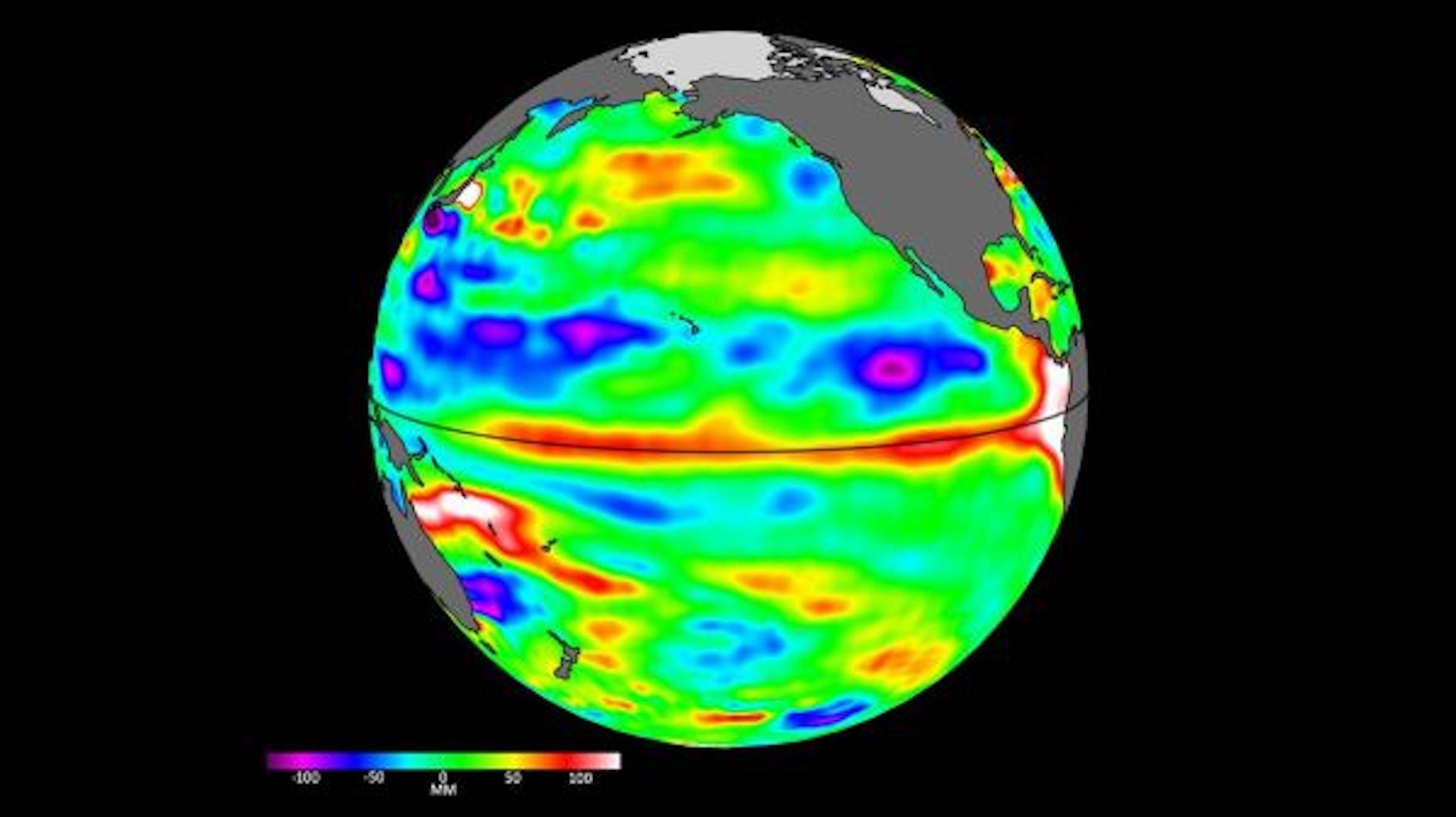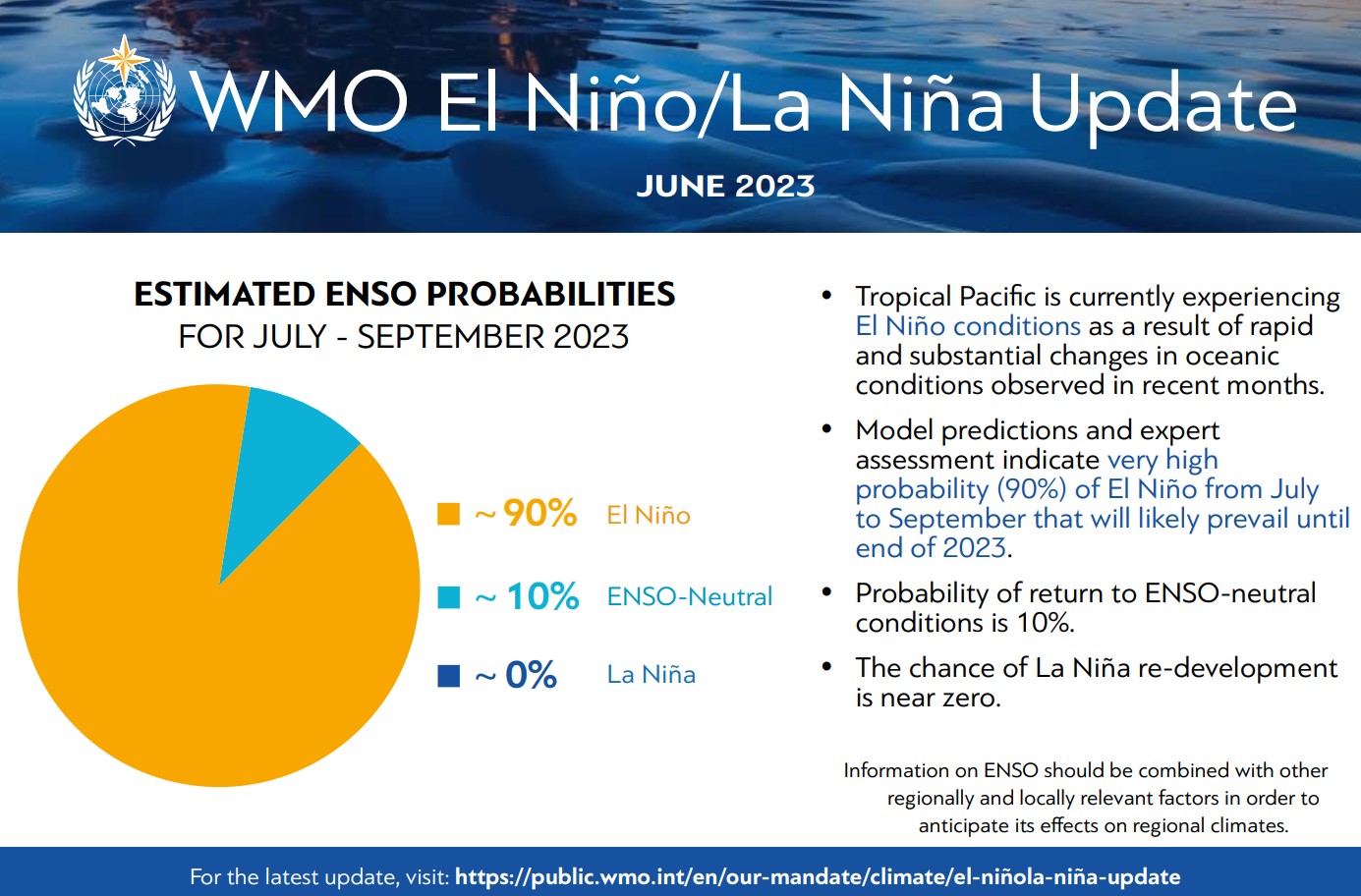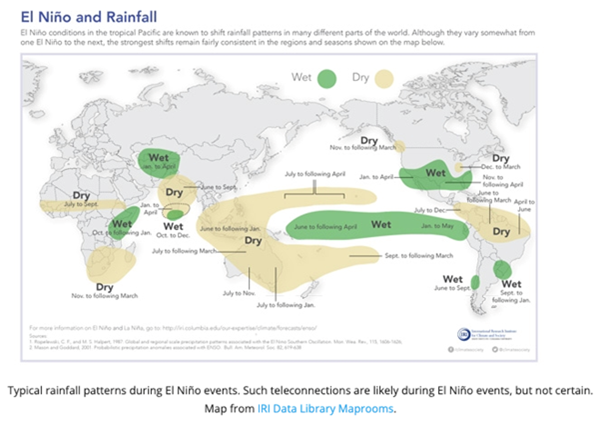El Niño is officially here and may cause temperature spikes and major weather events, scientists warn
Experts have advised precautionary measures to save lives threatened by surging temperatures and disruptive weather events caused by El Niño.

For the first time in 7 years, El Niño conditions have developed in the Tropical Pacific, prompting expert to urge that preparation for extreme weather events will be necessary to protect lives and safeguard livelihoods.
El Niño is a naturally occurring climate phenomenon that is connected to ocean surface temperatures in the central and eastern tropical Pacific Ocean. The United Nations World Meteorological Organization (WMO) has warned that El Niño conditions signal the possibility of a surge in global temperatures and disruptive weather. The WMO added that there is a 90% probability El Niño conditions will continue into the latter half of 2023 and until the end of the year.
"The onset of El Niño will greatly increase the likelihood of breaking temperature records and triggering more extreme heat in many parts of the world and in the ocean," WMO Secretary-General Petteri Taalas said in a statement.
Related: Climate change hits Antarctica hard, sparking concerns about irreversible tipping point
"The declaration of an El Niño by WMO is the signal to governments around the world to mobilize preparations to limit the impacts on our health, our ecosystems, and our economies," Taalas added. "Early warnings and anticipatory action of extreme weather events associated with this major climate phenomenon are vital to saving lives and livelihoods."
The last major El Niño event occurred in 2016, a year that remains the joint hottest 12 months on record, tied with 2020. 2016's status as a record hot year due to a "double whammy" of a powerful El Niño event and the effect of greenhouse gases on climate change.
According to the WMO, the 8-year period containing 2016 and 2023 has been the hottest since record-keeping began in 1880.
Get the Space.com Newsletter
Breaking space news, the latest updates on rocket launches, skywatching events and more!

El Niño is a "wake-up" call about climate change targets
According to the Met Office in the U.K., El Niño conditions are declared when sea temperatures in the tropical eastern Pacific rise half a degree above the long-term average. This occurs on average every 2 to 7 years in bouts that last between 9 and 12 months.
Despite the fact that El Niño is a natural phenomenon, it can't be viewed in isolation from human-driven (anthropogenic) climate change.
In a report published in May this year, the WMO was already predicting a 98% chance that one of the next five years, and this five-year period as a whole, would be a record-breaker in terms of global temperature, displacing 2016 and 2020 from the top spot as the warmest years on record.
The report also suggested there is a 66% possibility that the annual average near-surface global temperature will, at some point between 2023 and 2027, reach 1.5 degrees above pre-industrial levels for at least a year.
"This is not to say that in the next five years, we would exceed the 1.5°C level specified in the Paris Agreement because that agreement refers to long-term warming over many years," WMO Director of Climate Services Chris Hewitt said. "However, it is yet another wake-up call, or an early warning, that we are not yet going in the right direction to limit the warming to within the targets set in Paris in 2015 designed to substantially reduce the impacts of climate change."

El Niño and La Niña in 2023
El Niño events are usually linked to an increase in rainfall and even flooding in parts of the southern U.S., southern South America, the Horn of Africa and Central Asia.
On the flip side of this, the phenomenon is believed to lead to severe droughts across Central America, northern South America, Australia, Indonesia, and parts of southern Asia.
The effects of El Niño are generally considered to be the opposite of those of another climate-driving event, La Niña, periods of cooler than average sea surface temperature in the equatorial Pacific. The last La Niña ended in March 2023.
A month prior to the end of La Niña, average sea surface temperature anomalies in the central-eastern equatorial Pacific rose from nearly half a degree below average in February to around almost a full degree above average in mid-June. This, coupled with atmospheric observations, strongly hinted at the onset of El Niño conditions.
A fully established connection between ocean and atmosphere temperatures could take another month to fully couple in the tropical Pacific.
"As warmer-than-average sea surface temperatures are generally predicted over oceanic regions, they contribute to the widespread prediction of above-normal temperatures over land areas," the WMO recently said in its regular Global Seasonal Climate Update (GSCU) for July, August and September. "Without exception, positive temperature anomalies are expected over all land areas in the Northern and Southern Hemisphere."
Rainfall conditions for these three months are forecast to be in line with what would be expected for an El Niño period. The WMO said that the National Meteorological and Hydrological Services (NMHSs) will now monitor El Niño conditions and their impacts on rainfall and temperature on national and local levels. In addition to this, the WMO said it will issue updates on El Niño over the coming months as needed.
Join our Space Forums to keep talking space on the latest missions, night sky and more! And if you have a news tip, correction or comment, let us know at: community@space.com.

Robert Lea is a science journalist in the U.K. whose articles have been published in Physics World, New Scientist, Astronomy Magazine, All About Space, Newsweek and ZME Science. He also writes about science communication for Elsevier and the European Journal of Physics. Rob holds a bachelor of science degree in physics and astronomy from the U.K.’s Open University. Follow him on Twitter @sciencef1rst.
-
Ken Fabian With CO2 at record levels we can expect an acceleration of records being broken - including for the economic costs of climate related impacts. We really need to get a lot more serious about reducing emissions and building the foundations for economic growth that is not dangerously dependent on fossil fuels - before those impacts diminish our economies and our capacity to invest at large scale and in new and cleaner tech.Reply
On the positive side - and despite the bad mouthing by irresponsible denial polticicking - that new and cleaner tech is going from strength to strength. Eg Europe and Australia enjoying lower power prices for their renewables in the face of fossil fuel unreliability and up-yours profiteering and price volatility, strong global EV sales growth, mega solar panel factories in the pipe, hard to count numbers of battery factories for different kinds of batteries, including eg Toyota for a >900 km range/10 min charge EV within 4 years.
Despite the views often found within this forum I expect most Space.com readers appreciate the true significance of the climate problem and want to be informed. Thanks. -
spacehog35 Despite all the “climate” handwringing, there IS no proof to support man made climate change. Weather is cyclical based on solar activity and always has been. How arrogant of us humans to actually believe we have any effect on global weather. This planet has obviously been through massive disasters occurring over its history and it always recovers. The climate change environmentalists’ mandates will do nothing but waste massive amounts of money and time with NO discernible positive effects. Even the founder of Greenpeace has recently said that CO2 is not a greenhouse gas and we should not be trying to put caps on it. Trees need it to create oxygen! Good grief.Reply -
cnjuste In the above article (paragraph 3) you indicated that a 0.5°C implied a 32.9°F change.Reply
In fact a 0.5°C change is a 0.9°F change
0°C = 32°F
0.5°C = 32.9°F
Thank you,
Christopher Juste









